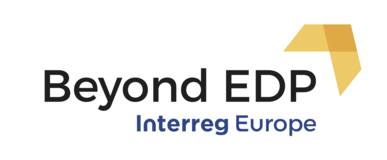A Northern Netherlands Matrix for a strengthened innovation ecosystem
In recent years, we have aimed to strengthen the Northern Netherlands innovation ecosystem. Key for this is a continuous entrepreneurial discovery process (c-EDP). In order to overcome governance issues that prohibit an optimally functioning system, we took on board the matrix-model introduced by the Östergötland region to structurally change the innovation ecosystem.
Whereas bottom-up EDP-management is functioning quite well, the overall coordination leaves room for further improvement. Over the last years, the region has seen the development of valuable bottom-up initiatives, such as innovation environments and innovation hubs. The region is, thus, harboring promising developments, but too often these initiatives are still too fragmentary and too individual. They lack a cross-sectoral, cross-disciplinary, cross-actor and outward looking-approach.
Strengthening the innovation ecosystem was, therefore, at the core of the Northern Netherlands’ Beyond EDP Action Plan. SNN examined how to create and maintain fertile ground on which partners can continuously meet, interact, collaborate, come up with ideas and actually start initiating explorative activities. These ideas and activities can eventually become innovations with clear market potential that have a significant economic and societal impact in the Northern Netherlands. The best practice of the Östergötland region regarding the governance matrix offered a fertile base for SNN’s framework to tackle the challenge at hand.
During the run of the Beyond EDP-project, we have adopted and adapted the Östergötland-matrix to specifically suit the regional context. The initial framework for the Northern Netherlands matrix consisted of a set of starting points:
First of all, the matrix is not a new institution. Instead, the matrix must be understood as a structural and sustainable place for all partners in the Northern Netherlands’ innovation ecosystem - a place where quadruple helix stakeholders from all backgrounds find and help each other. A place to cooperate and innovate together, across sectors. The matrix opens up a broad network and actively seeks collaboration with partners in the innovation ecosystem.
Secondly, participants in this matrix must be key players. Participation in the matrix is based on expertise and the willingness to share ideas and to help each other, regardless of any background. The next paragraph elaborates further on this subject.
Thirdly, there must be sufficient recognition for the effort and workload associated with supporting partners with innovative ideas and for structurally improving the innovation ecosystem and the matrix itself. Participation in the matrix is therefore reimbursed in an appropriate way, if this does not logically fit in the core tasks of the person concerned.
After its first implementation, it soon became clear that the matrix appears to meet a need and offers added value to the region. The matrix is now becoming an established platform where quadruple helix stakeholders from the field coordinate and cooperate with each other, try to help initiatives further at an early stage, share ideas and seek connections across themes.
The Northern Netherlands can distinguish itself as a region that knows how to create mass by organising good cooperation. In doing so, we take into account the different levels of the innovation ecosystem in our region. The core of RIS3 is the creation of an open and creative climate in which existing strengths are used to create new development opportunities and smart specialisations that contribute to the broad prosperity of the region: a circular, happy and inclusive Northern Netherlands. This is the basis for the vision on regional development on the different levels:
- At macro level, it is important that there is support for this vision;
- At the meso level, the right instruments are needed to boost development opportunities or smart specialisations;
- At the micro level, the right programmes and projects are then created.
This vision for the matrix is closely linked to this governance vision of RIS3. The matrix offers a possibility for an "inspiring ecosystem in which the Q4-actors can meet each other and discover things together". The matrix, therefore, also became an integrated part of the governance structure of the RIS3, helping our approach of a continuous entrepreneurial discovery process from the micro-level.

All in all, the matrix has been a valuable instrument to strengthen the Northern Netherlands innovation ecosystem. And because of its integration within the new RIS3, the matrix can continue to enhance the knowledge base of SMEs. The matrix now has an established role as coordinator of the innovation ecosystem, which allows for continuous interaction and thereby operationalizing the new mission-oriented RIS3 for the Northern Netherlands.









